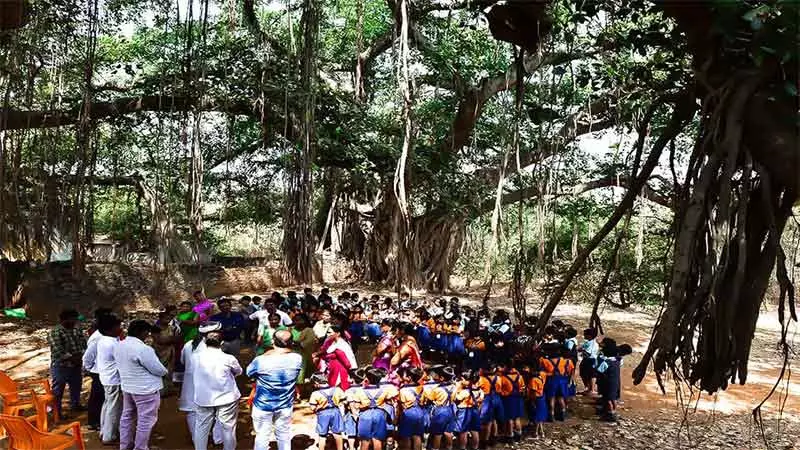
Navy project in Telangana forest pits people against government
The VLF radar station of the Eastern Naval Command at Visakhapatnam is to communicate with ships and submarines with low-frequency radio waves

A mass campaign is raging in Telangana against a radar station set to come up in a forested region that people and activists say will cause widespread environmental destruction.
The horrific landslide in Wayanad in Kerala has only added strength to the protests against the Very Low Frequency (VLF) radar station of the Indian Navy.
The Telangana government has decided to hand over the natural forest lands in the Anantagiri hills to the Navy after the Telangana High Court lifted a stay order on the project.
Radar for ships, submarines
The VLF radar station proposed by the Eastern Naval Command at Visakhapatnam is intended to communicate with ships and submarines using low-frequency radio waves.
Whatever the needs of the Navy, experts point to the colossal losses the forests and people will suffer due to the impending degradation.
According to estimates, a whopping 12 lakh trees of various species will be felled for the project, which covers 2,900 acres of forest land including 1,400 acres for an antenna park, 1,090 acres for technical needs, 310 acres for residential complexes, and 100 acres of 'safe zone' to avoid radiation hazard.
The rich forests
The dense forests of Damagundam in Puduru mandal of Vikarabad district are rich in biodiversity. The forests are home to hundreds of rare tree species, especially medicinal plants, besides valuable flora and fauna.
For rainwater, this area acts as a catchment zone. Destruction of this forest may result in more frequent floods in Hyderabad city.
The people opposed to the project have organized themselves as the Damagundam Forest Preservation Joint Action Committee. Greens are also concerned about the impact of the project.
Forests cannot be replaced
Locals say that the authorities are largely indifferent to their concerns as well as those of scientists and environmentalists.
They say the promise of an equal number of new saplings to be planted for the trees cut down shows that they have no understanding of the issues raised.
Past experiences have shown that with man-made forests, it is impossible to recreate the old ecosystem based on compensatory forest development.
Environmental concerns
Because of this project, some 60,000 people living in 20 villages around this forest will be gradually affected. The livelihoods of small farmers and herdsmen who depend on the forest for their livelihood will be hit.
Along with Musi River, which originates in Vikarabad, the Kagna River will also be affected. Deforestation leads to soil erosion and adversely affects the entire river basin.
Experts warn that the radiation emitted from the project poses a serious threat to the health of the people in the surrounding areas.
12 lakh trees to go
The area is also famous for a 500-year-old Bugga Ramalingeswara Swamy temple.
In response to another public interest litigation filed in 2020, the Telangana State Principal Chief Conservator of Forests (PCCF) admitted in the court that 12,12,753 trees were allowed to be felled in the past five years.
Experts say that such flawed development models are what has contributed to the global climate crisis. India is no exception to this situation.
Dangers of forest vandalism
This has often led to flash floods, heat waves, increasing pollution, crop losses, and other natural disasters. The worst affected are the poor people and their meagre belongings.
Russia is the only country said to be running a VLF project.
Activists say the government's decision to allow the radar project in the Damagunda forest should be re-examined and revoked.
Alternatives to VLF radars
They say the Telangana government should be committed to protecting the long-term interests of the people and long-term environmental interests.
Experts say there are environment-friendly alternatives to low-frequency radar stations. These exist in Britain, the United States, and Australia. Land required for such radar stations is much less.
Union Defence Minister Rajnath Singh and Chief Minister A Revanth Reddy were to take part in the inauguration of the project on July 28. But the programme has been postponed for now.
(This article was originally published in The Federal Telangana)

